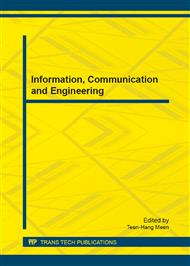p.441
p.446
p.451
p.456
p.462
p.467
p.472
p.477
p.485
Residual Stress Measurements of Cylindrical Parts by Hole Drilling Strain Gage Method
Abstract:
Hole drilling strain gage method is a semi-destructive measurement. The method is most commonly used to measure residual stresses. The relieved strains are measured around the drilled hole, and the residual stresses are estimated by the mechanical relationship between relieved strains and residual stresses as well calibration coefficients. The calibration coefficients indicate the relieved strains due to unit stresses within the hole depth. Finite element method is always used to determine the calibration coefficients, and the analytical model is based on the infinite plate. But the geometrical shape and size of cylindrical part are different from the infinite plate. The relieved strains around the drilled hole are different too. Finite element model of the cylindrical part is constructed to obtain the hole drilling calibration coefficients. The measurement of residual stresses in a cylindrical part subject to axial loading calculated by calibration coefficients of both infinite plate and cylindrical part model are compared to show the difference.
Info:
Periodical:
Pages:
462-466
Citation:
Online since:
February 2013
Authors:
Price:
Сopyright:
© 2013 Trans Tech Publications Ltd. All Rights Reserved
Share:
Citation:


